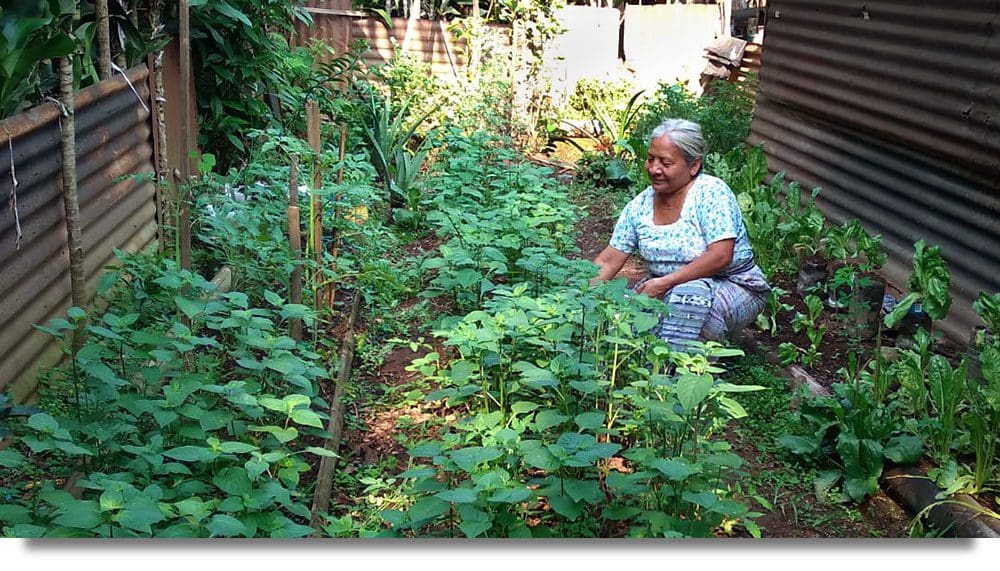
Permaculture: A Sustainable and Resilient Way of Living
Permaculture, coined by Bill Mollison and David Holmgren in the 1970s, is a system of sustainable and resilient garden design that mimics the patterns and features of natural ecosystems. It’s an agricultural method that we at Seeds for a Future are passionate about sharing through our program. Permaculture has gained popularity worldwide as a means of creating sustainable and productive ecosystems that provide food, shelter, and other resources while reducing waste and environmental impact.
Let’s dig deeper into what makes this age-old practice so easy to embrace. Permaculture principles are based on three core ethics:
- Care for the earth: Permaculture design seeks to regenerate ecosystems by mimicking natural patterns and processes. This might involve planting native species, using natural building materials, and designing systems that work with the natural landscape. Also contributing to “earth care” are efforts to conserve resources, build soil fertility, minimize waste, and support biodiversity.
- Care for people: Meeting people's basic needs for food, water, shelter, and healthcare is essential for ensuring their well-being. Permaculture designs often include strategies for providing these basic needs in a way that is sustainable and regenerative. This also embraces empowering communities, supporting diversity, and promoting health and wellness.
- Fair share: By working together with others, we can achieve more than we can on our own. This includes supporting local economies. When we have a surplus of resources, we can share them with others in our community. Likewise, by reducing our consumption of resources, we can ensure that there is enough to go around for everyone.
These three core ethics are translated into a set of design principles that guide the creation of permaculture systems. These principles include using renewable resources, minimizing waste, promoting diversity, and integrating different elements to create self-sustaining systems.
Permaculture's popularity stems from its ability to address multiple sustainability challenges simultaneously, from food security to climate change, both of which are challenges faced by our families in rural Guatemala. By designing and implementing permaculture-inspired systems, individuals and communities can create regenerative and self-sustaining ecosystems that provide food, shelter, and other resources while reducing waste and environmental impact.
One of the key features of permaculture is its emphasis on collaboration and community-building, which is an essential aspect of our mission at Seeds for a Future. Permaculture designs often involve creating networks of interconnected systems, such as community gardens, food forests, and eco-villages. These systems not only provide food and other resources but also promote social cohesion and resilience.
Permaculture is also adaptable to a wide range of contexts, from urban to rural environments. Permaculture systems can be designed to fit the unique characteristics of each environment, such as available resources, climate, and topography.
So how can we put these principles into practice? There are many ways to implement permaculture principles at home.
Here are a few methods to get you started:
1. Start a Permaculture Garden: A permaculture garden is designed to mimic the natural ecosystem by integrating edible and non-edible plants, animals, and insects. You can use permaculture design principles to create a garden that is self-sustaining, produces food year-round, and is low maintenance.
2. Composting: Composting is an essential part of permaculture. It involves recycling organic materials, such as food scraps and yard waste, into nutrient-rich soil that can be used to fertilize your garden. You can start a compost pile in your backyard or use a compost bin.
3. Water Harvesting: Water harvesting involves collecting and storing rainwater for later use. You can use this water to irrigate your garden or for other household purposes. Simple methods for water harvesting include rain barrels, swales, and ponds.
4. Food Preservation: Food preservation is another important aspect of permaculture. By learning to can, dehydrate, ferment, and freeze food, you can extend the shelf life of your harvest and reduce food waste.
5. Perennial Plantings: Perennial plants are an excellent choice for a permaculture garden because they require less maintenance and provide food year after year. Incorporating perennial fruits, vegetables, and herbs into your garden can reduce the need for annual plantings.
6. Companion Planting: Companion planting involves planting different crops together that benefit each other. For example, planting nitrogen-fixing plants like beans with heavy feeders like tomatoes can improve soil fertility and yield.
7. Natural Pest Control: Permaculture encourages natural pest control methods, such as companion planting, crop rotation, and attracting beneficial insects like ladybugs and lacewings to your garden.
These are just a few methods for implementing permaculture principles at home. Start small, and by incorporating these principles into your daily life, you can create a sustainable and regenerative ecosystem in your own backyard.
By Leilani Yats

